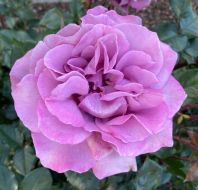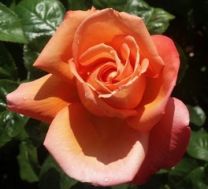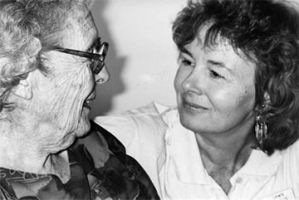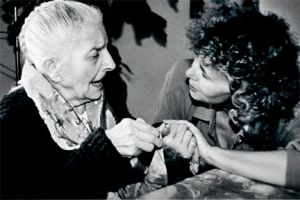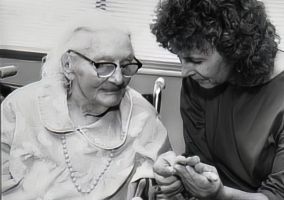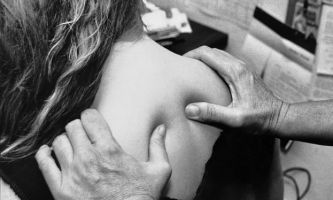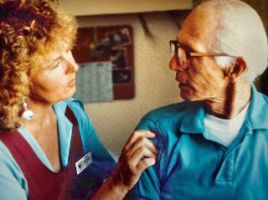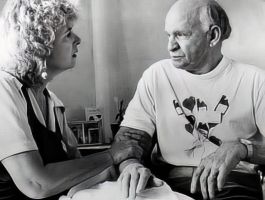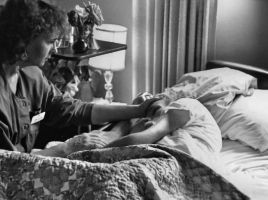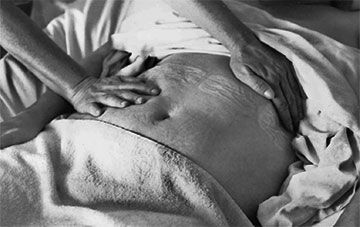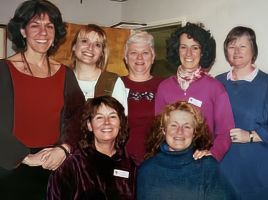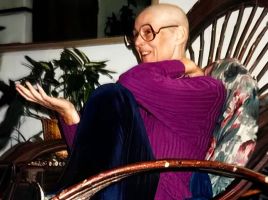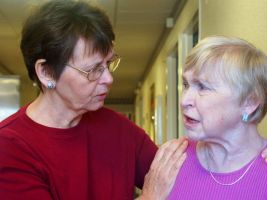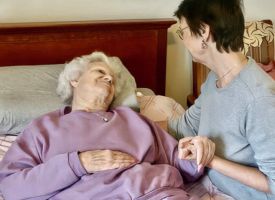History
COMPASSIONATE TOUCH for Those in Later Life Stages™
Dawn Nelson, MFA, CMT
Beginnings
Creating the COMPASSIONATE TOUCH for Those in Later Life Stages™ program was a response to what I saw as a growing need for age-appropriate massage and gentle touch for the confined or the less mobile elderly, the chronically ill, and those approaching death. My primary purpose was to provide physical touch along with unconditional, one-on-one attention to those segments of our population.
I was not the only person to notice this need. Irene Smith had already started a flourishing program, Service Through Touch, which eventually came to be known as Ever Flowing, originally to provide massage to individuals with AIDS. She was a pioneer in this field as a care provider, a teacher, and an author, a woman who inspired countless individuals before her untimely death in 2021. The Day-Break Geriatric Massage Project originated in the early 1980s founded by gerontologist and author, Dietrich Meisler, who passed it on to Sharon Puszko when he retired in 2000. (Dr. Puszko retired in 2022, passing the ownership/directorship on to one of her long time instructors.) Gayle McDonald, whom I met when she was a participant in a workshop I gave at Oregon School of Massage created her oncology massage practice in the early 90s and authored her first book a few years later. I think it safe to say that we respected and were inspired by each other’s work, often showed up at the same conferences, shared referrals and relevant news, and sometimes had students in common.
COMPASSIONATE TOUCH for Those in Later Life Stage™ was launched in 1990 at a 60-bed extended care facility in San Mateo, California. My oldest daughter, who was the Social Services Director at the time, helped promote the program by identifying potential clients and informing family members, court appointed guardians and other responsible parties of both the availability and potential benefits of the program. The feedback from the residents was immediate and positive. Response from a few residents who were non-verbal or and/or seemingly non-responsive was often more subtle, yet there were always positive indicators in the form of smiles, relaxed muscles, eye contact and so on.
After mailing a descriptive brochure along with a cover letter, to other care facilities, I began getting more and more requests. One care facility director had the idea to pay for several employees to receive a 15-20 minute chair massage once a month in two buildings she owned. Recipients of this gift included the current “Employee of the Month” as well as new hires, those about to retire or occasionally, someone experiencing a milestone birthday or a difficult challenge such as the death of a family member.
In the beginning, I was gaining knowledge as I went along, learning about the significant differences between relating to the frail elderly or the seriously ill through the medium of touch and giving massages to younger, healthier individuals on a massage table. Working within these unique environments brought up many issues which, at that time which were not being addressed in massage schools. Since I had no established guidelines or mentors, I learned from direct experience, relying heavily on my own intuitive wisdom and my ability to be in contact with the individual, rather than focusing on his or her age, disease process, or physical/mental challenges.
I learned that while the confined elderly and ill might respond negatively to being offered “massage,” yet nearly everyone responded positively to my focused presence and unconditional contact. The tolerance for and openness to the intentional physical touch I was offering grew naturally. Some who were initially somewhat suspicious of a new face were eager for attention, company or conversation; others shared their history, told me jokes and even sang with me. Once those individuals realized that I was going to give them my undivided attention for at least fifteen minutes, and that I enjoyed being with them, they became willing and often eager participants in their sessions. Long term and short term residents responded positively to lotion applied to dry skin, hand massages, and back and shoulder rubs, especially when they realized they didn’t have to remove any clothing, leave their rooms or “perform” in any way.
Growth
While completing a 150-hour certification program at the Rosebridge Graduate School of Integrative Psychology Awakening to Life and Death, I became a volunteer for Kaiser Permanente Hospice program to fulfill a requirement for a particular class. The assignment was to spend a specific amount of time with at least one person who was nearing death. After a few months of visiting several individuals enrolled in hospice, I was offered payment for my services. At that point COMPASSIONATE TOUCH for Those in Later Life Stages™ became an established part of the program and I eventually brought in three other massage therapists I had trained to help fill the increasing requests. The sessions were given in individual homes, or occasionally in the hospital, and sometimes required travel to other nearby towns. These visits were offered at no additional cost to anyone in the hospice program, along with music therapy, art therapy and other special services. An informational flyer about COMPASSIONATE TOUCH for Those in Later Life Stages™ was included in packets given to the families
of new enrollees.
I soon began giving in-service trainings to hospice volunteers and then teaching workshops to massage therapists, volunteer caregivers, nurses, and others both in the Bay Area and elsewhere across the United States. I wrote my first book, Compassionate Touch for the Elderly, the Ill and the Dying (published in 1994) quite frankly because the bibliography available at that time for those wanting more information on how to relate to these marginalized populations in our society individuals through skilled touch and massage was nearly non-existent.
A few years later, at the request of some of my students, I established a Certification Program in this specialized modality for family and volunteer caregivers as well as licensed massage practitioners, in order to provide further training in the unique skills needed to relate to residents in long term care facilities and individuals enrolled in hospice home care programs. My daughter and I subsequently co-produced several award-winning videos (now available on You Tube) for use as teaching tools, and as additional resources available to a larger audience. My second book, From the Heart Through the Hands: The Power of Touch in Caregiving (Findhorn Press, 2001 with updated editions in 2006 and 2009) helped me share what I was continuing to learn and impart guidelines for those who wanted to use attentive touch and positive communication skills in relating to those specific populations. I began traveling to other states to give training workshops and to speak at various national and state conferences about the importance of what I and those I had trained were offering.
In 2002, I appointed a former student and Professional Level Practitioner, Ann Catlin, as director of my program in order to give priority to maintaining my health after treatment for ovarian cancer, to write my next book, Making Friends with Cancer, and to take responsibility for my mother’s care in the last two years of her life. A few years later Ann chose to go forward in her own way using the name Compassionate Touch®. I changed my business and website name to from the heart through the hands to avoid confusion.
It was my great privilege to spend time over several decades with hundreds of aging and elderly individuals who responded positively to unconditional focused touch, and to promote this kind of essential contact within hospice programs, residential care facilities and dementia specific care units across the country.
Retirement
I am no longer teaching COMPASSIONATE TOUCH training workshops, and any touch sessions I now offer are on a volunteer basis. I want to extend my deepest gratitude to the myriad individuals who trained with me or attended conference talks, seminars and workshops I was privileged to give across the US and in Europe for thirty years. I wish the very best to all those who have continued to incorporate some of the principles and practices of COMPASSIONATE TOUCH for Those in Later Life Stages™ in your own work, whether as professional therapists, volunteers, caregivers, or educators.
I am in good health for my age and am choosing to spend more time with my retired husband, as well as with our adult children and our grandchildren. My husband and I hope to offer couples workshops or Dyad Meditation Retreats from time to time. I continue to write, to deepen my personal meditative practices and to find pleasure in tending to our 53-bush
rose garden.
